 
|
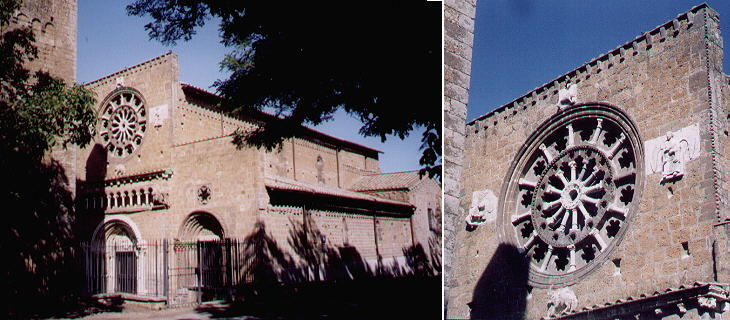 | ||
Both churches have Romanic and Gothic elements and they depart from the structure of the early Christian churches
based on the design of the Roman basilicas. The fašade of S. Maria Maggiore is decorated with the symbols of the Evangelists. The use of marble and of stones of different colours
gives added emphasis to its large rose-window.
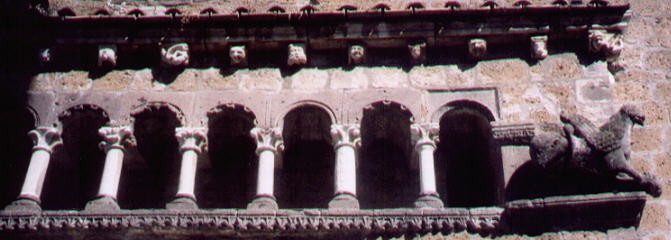 | ||
The gallery of S. Maria Maggiore is a match to the rose-window, as the same columns and stones were used.
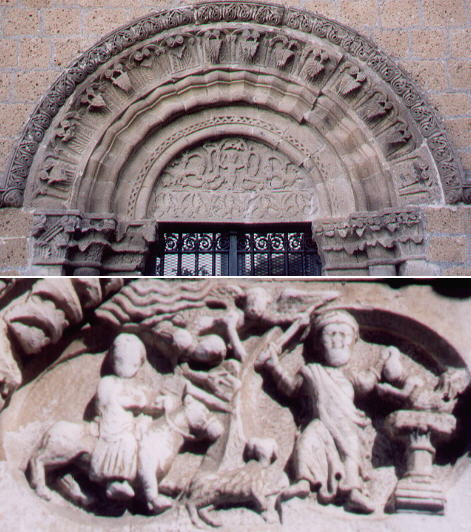 | ||
The lateral portals are decorated with symbolic reliefs while the central portal shows a sort of modern strip: two scenes portray the sacrifice of Isaac. A capital shows the Flight to Egypt (click here to see it in a page showing other unusual capitals).
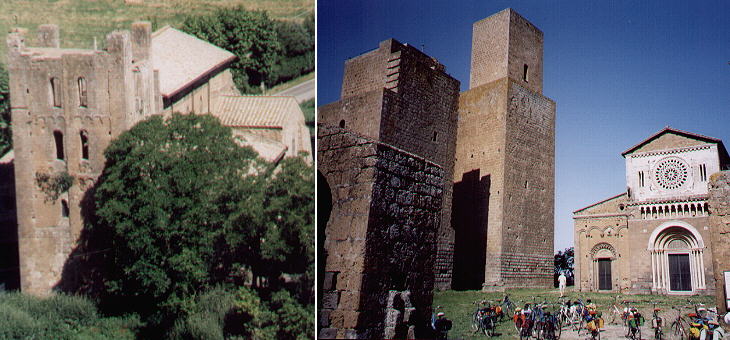 | ||
Facing S. Maria Maggiore is an imposing bell tower which most likely was built for a different purpose. It can best be seen from the top of the hill where the church of S. Pietro is located.
S. Pietro is flanked by huge towers (one of which is leaning) and by the bishop's palace, but its isolation from modern buildings adds a touch of magic to the site. In spring this part of Latium with so many things to see at a short distance from each other is often visited by tourists who travel by bicycle.
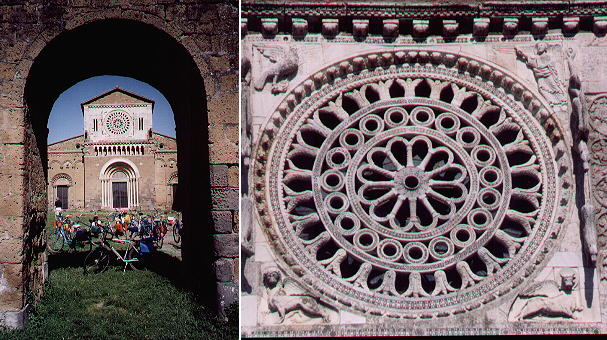 | ||
While the rose-window of S. Maria Maggiore conveys the impression of a wheel, the rose-window of S. Pietro conveys that of a lace-work. The symbols of the Evangelists are skillfully located at the angles of the square which frames the rose-window.
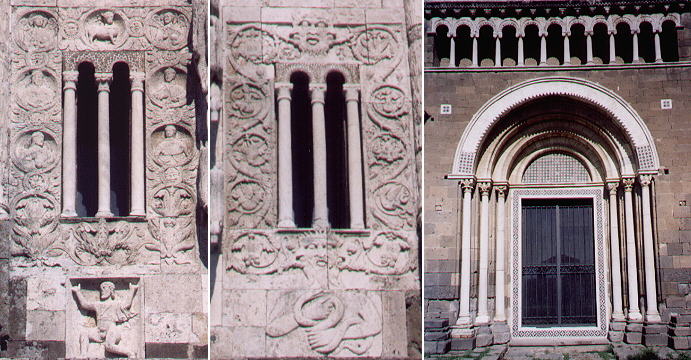 | ||
The decoration of the fašade includes also a representation of the Church: the medieval artist made use of an ancient relief which he thought represented Atlas and he positioned it below the symbols of the Church (two angels, the Lamb of God, four saints) as if Atlas was supporting the Church, rather than Earth. As a matter of fact the relief portrays a rather profane dancing satyr.
The representation of Evil is both less complicated and more original with its scaring faces of devils.
While these reliefs are typically medieval, the Cosmati portal with its classic proportions and design is already an anticipation of a new age: the Renaissance.
In and about Viterbo - other pages:
Viterbo
Bagnaia
Bagnoregio
Bomarzo
Orte and Vasanello
S. Maria della Querce
S. Martino al Cimino
Vitorchiano
Walks with Ferdinand Gregorovius in the Roman countryside
some other walks:
A walk to Porta Furba
Via Appia Antica from Cecilia Metella to Torre in Selci
Via Appia Antica from Torre in Selci to Frattocchie
See my Home Page on Baroque Rome or my Home Page on Rome in the footsteps of an XVIIIth century traveller
All images © 1999 - 2004 by Roberto Piperno. Write to romapip@quipo.it
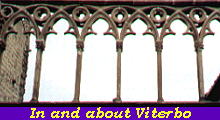 Tuscania: the churches outside the walls
Tuscania: the churches outside the walls